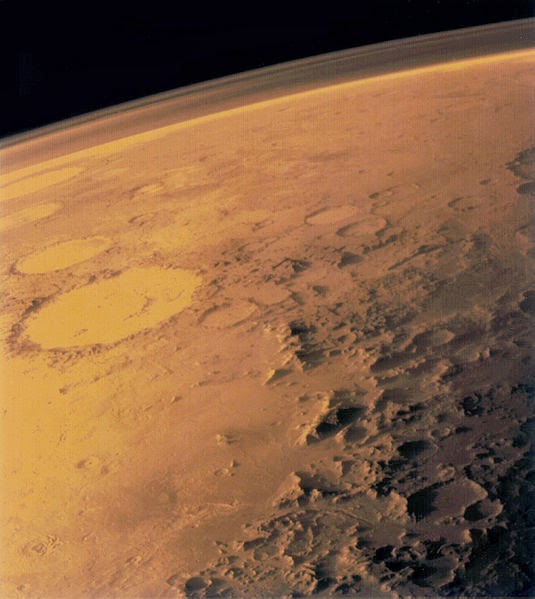
An international group of specialists in the field of planetary sciences has found strong evidence that lava flows on Mars may also host base and precious metals.
The Martian surface geology is dominated by volcanic rocks, which are broadly similar to ancient lava flows on earth, such as komatiites and ferropicrites.
On Earth, these rocks are significant hosts of precious and base metals such as nickel, copper and the immensely valuable platinum group elements.
In a paper published online today in Ore Geology Reviews Professor Marco Fiorentini and Ph.D. researcher Raphael Baumgartner, from the Centre for Exploration Targeting (CET) at The University of Western Australia and the ARC Centre of Excellence for Core to Crust Fluid Systems (CCFS), together with an international group, present their findings on whether lava flows on the Red Planet also host base and precious metals.
“We found strong evidence that mechanisms crucial in the formation of ore deposits on Earth also acted on our neighbour planet, where lava flows may have formed base and precious metal rich mineralisation,” Ph.D. researcher Raphael Baumgartner said.
The study’s lead scientist and project coordinator, Professor Marco Fiorentini, added: “Answering the question of whether this style of mineralisation also exists on Mars offers a chance to enhance our fundamental understanding of the processes governing the evolution of such mineral systems on Earth – improving the scientific foundation upon which mineral exploration models are built.”
David Baratoux, a project collaborator from the Université de Toulouse, said the outcomes of the study provide a comprehensive foundation for further research targeting individual Martian igneous provinces to host precious and base metal rich mineralisation.
“As a first step, we examined the prospectivity of Mars at the planetary scale. We are confident that our future work will shed light on specific settings where these mineralised occurrences likely occur on Mars,” he said.
Kerim Sener, a project sponsor from Matrix Exploration Pty. Ltd., a private mineral resources consultancy, emphasised the importance of the research for future Martian exploration.
“Understanding how and where potential ore forming processes occurred on Mars is a prerequisite for long-term planning for future space missions to the planet and for designing exploration criteria for certain sample-return programmes,” he said.
The Martian geology is surprisingly well documented. Orbiting satellites have imaged and analysed Mars surface remotely, Landers and Rovers have directly observed and analysed the Martian surface, and even limited rock specimens are available to the scientific community – with the Martian meteorites representing fragments of the Martian crust ejected by asteroid impacts.
Baumgartner RJ, Fiorentini M, Baratoux D, Micklethwaite S, Lorand JP, Sener AK, McCuaig C. Magmatic Controls on the Genesis of Ni-Cu±(PGE) Sulphide Mineralisation on Mars. Ore Geology Reviews (in press).
Note : The above story is based on materials provided by University of Western Australia.










